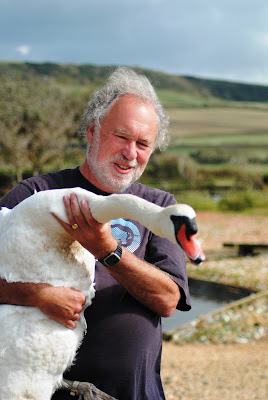This blog may help people explore some of the 'hidden' issues involved in certain media treatments of environmental and scientific issues. Using personal digital images, it's also intended to emphasise seasonal (and other) changes in natural history of the Swansea (South Wales) area. The material should help participants in field-based modules and people generally interested in the natural world. The views are wholly those of the author.
Sunday, 29 November 2020
This Avian 'Flu Just Flies By
It's amazing how things change. The last time avian flu hit the UK, there was real panic about its ability to, not only decimate wild and domesticated bird stocks, but its potential to infect human populations. If I remember rightly, stocks of antiferon drugs (these reduce the ability of viruses to spread to neighbouring cells) were expensively acquired. They were eventually little-used and only have a short shelflife. We now have another full-blown outbreak of the H5N8 strain. It is killing wild birds (like swans, buzzards, geese and curlews) and infecting farmed chickens in Cheshire, Herefordshire, Kent and Leicestershire. This has resulted in the setting up of a biosecurity zone across England, Scotland and Wales (https://www.gov.uk/government/news/avian-influenza-bird-flu-national-prevention-zone-declared). This strain seems to pose little danger to humans but, it could well be, that smaller wild bird species are dying in numbers (they are simply less obvious, when infected, than birds like swans and geese). Avian 'flu is also, in the current times, much less newsworthy than Covid-19, so it hardly gets a mention. Bird 'flut does, however, have parallels that are not a million miles from the 'human' virus on which all of our attention is focused.
Subscribe to:
Post Comments (Atom)
-
I n the UK and US, a pparently popular and successful vegan/vegetarian restaurants are reportedly closing or adding meat to their menus ( ...
-
Early ripening fruit may seem convenient but some folk think it confirms environmental stress. There's also a possibility th...


%20mating%20NWCW.jpg)


No comments:
Post a Comment